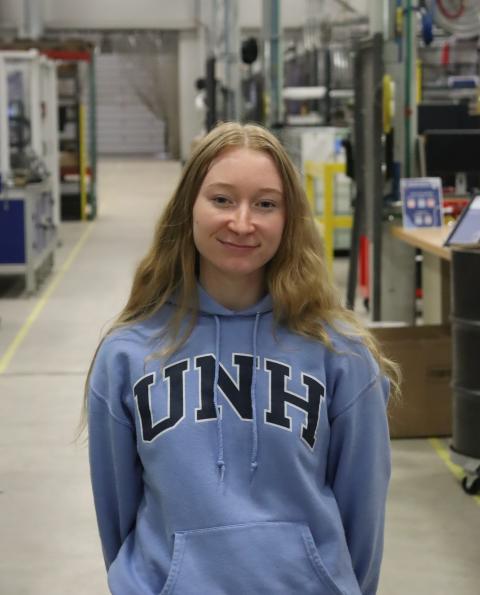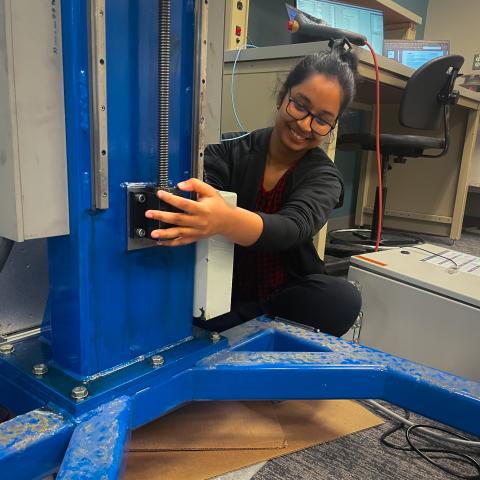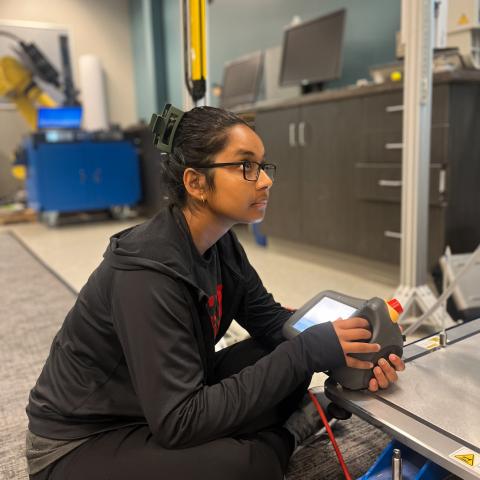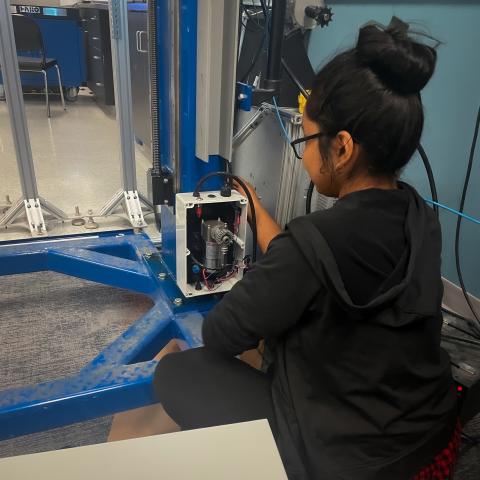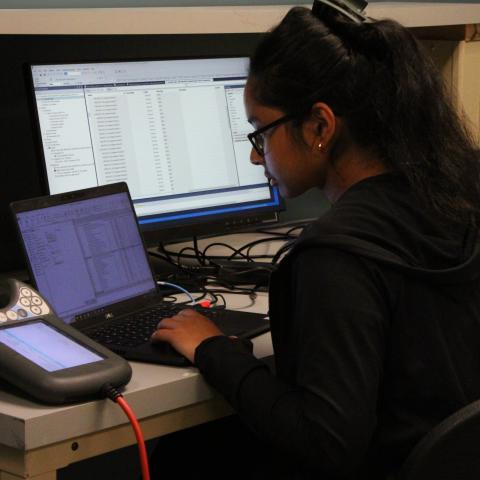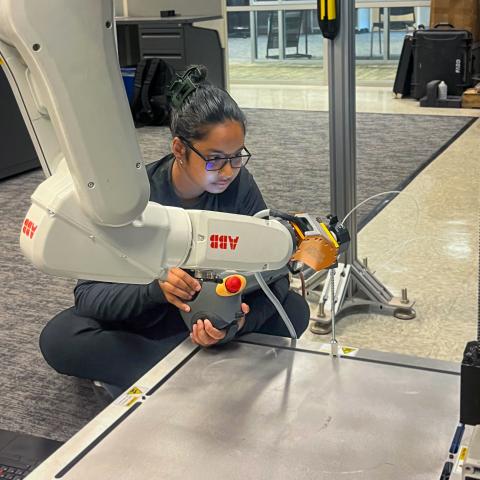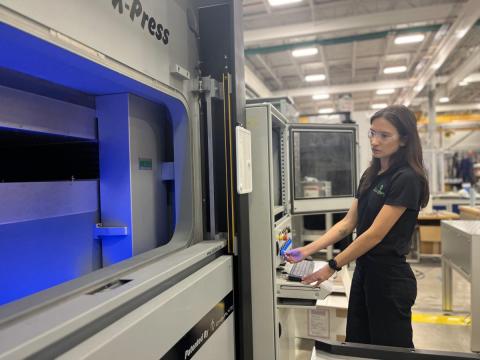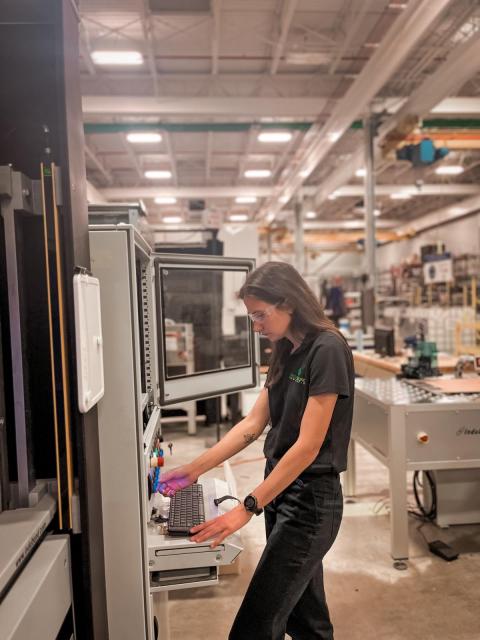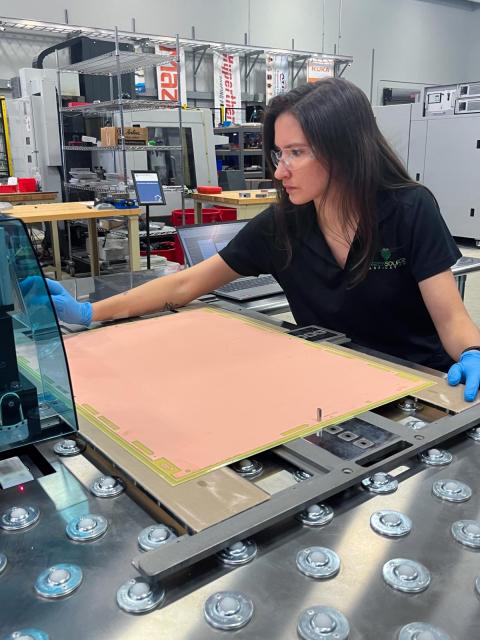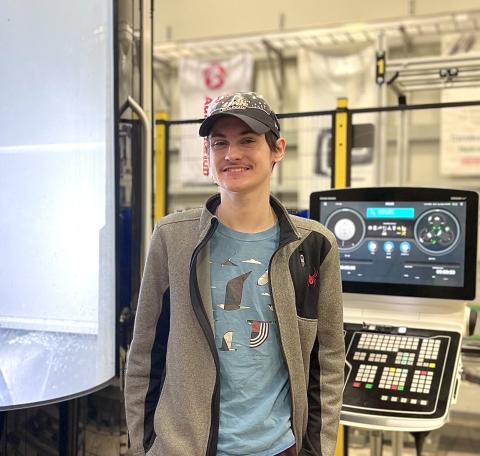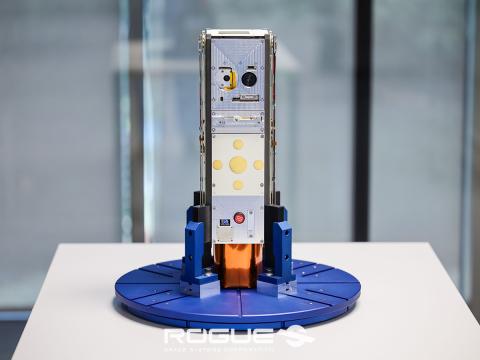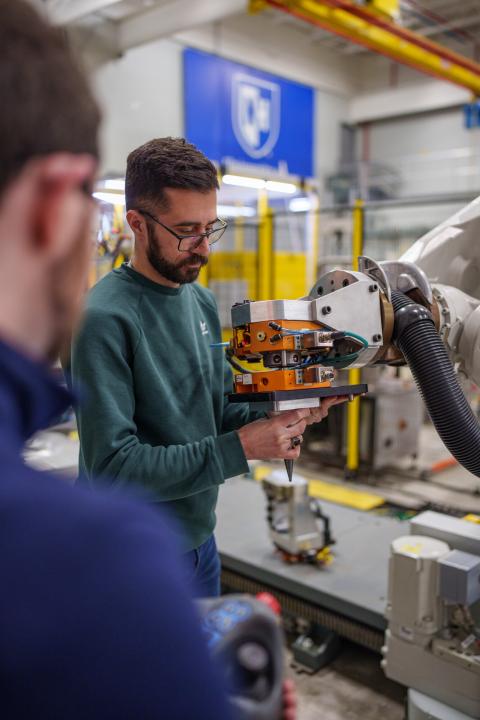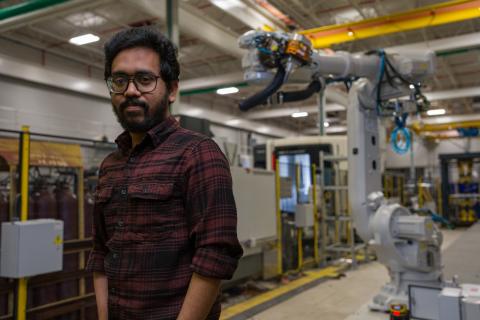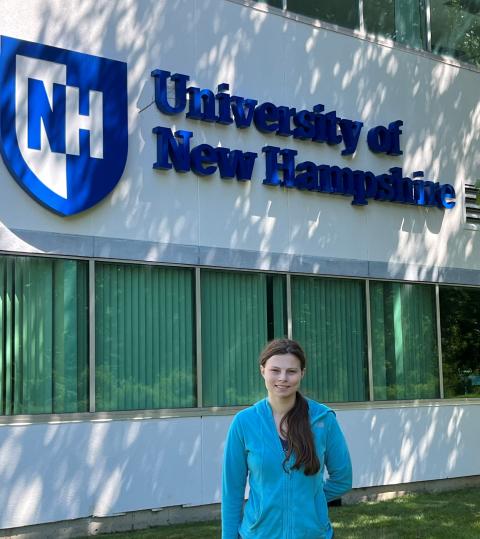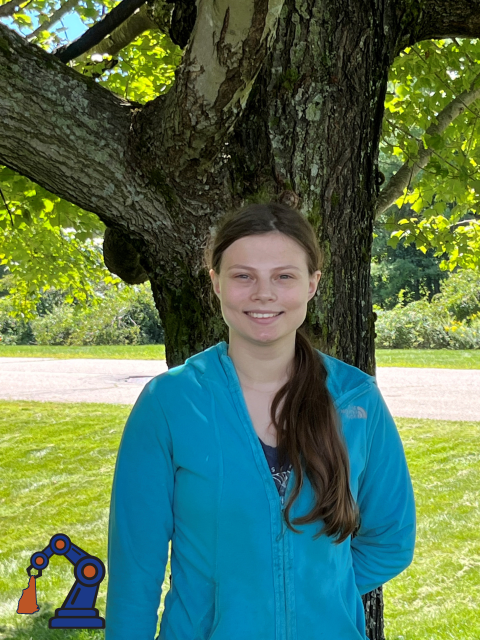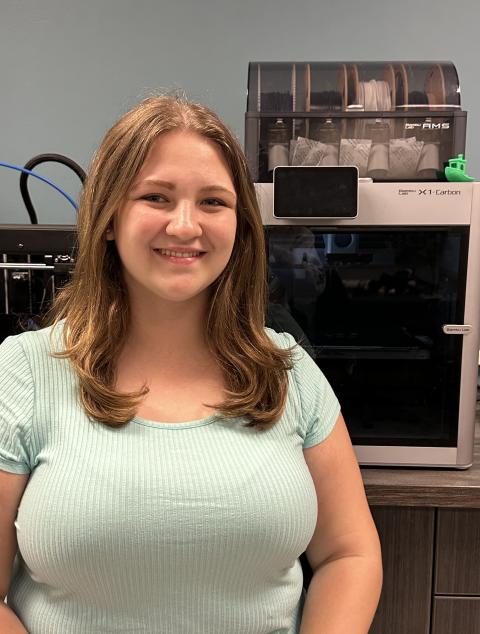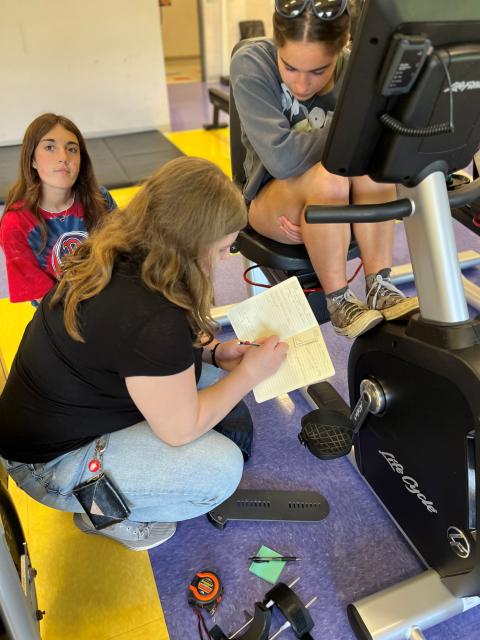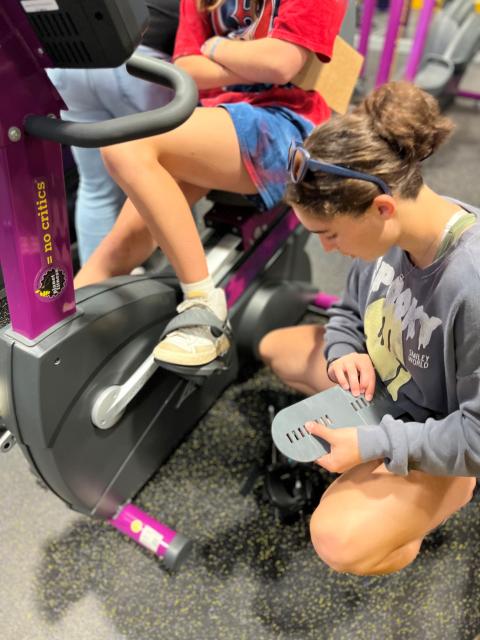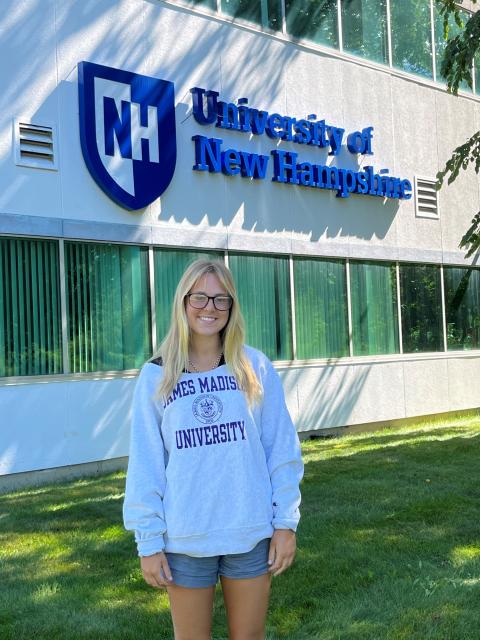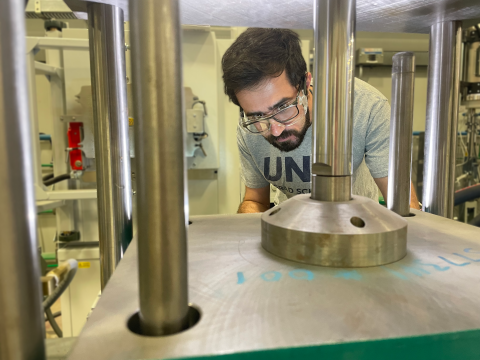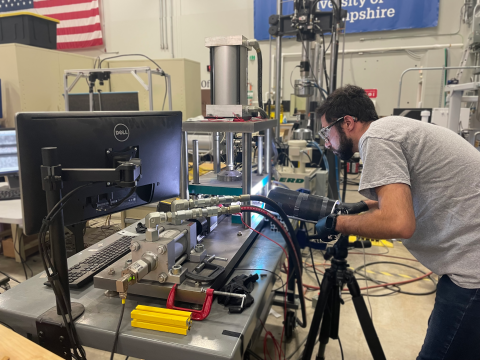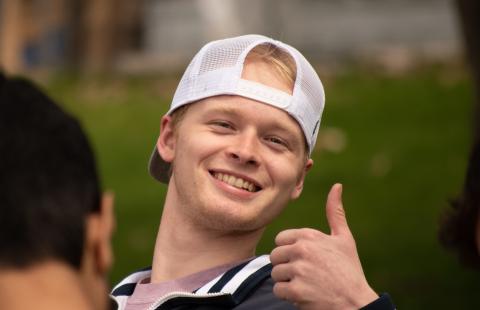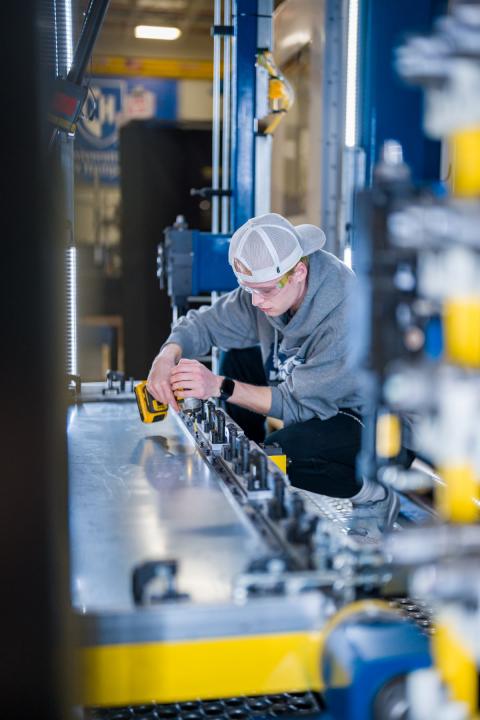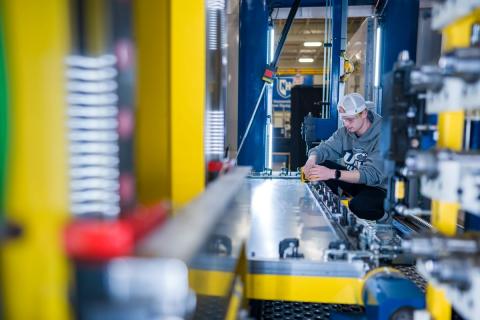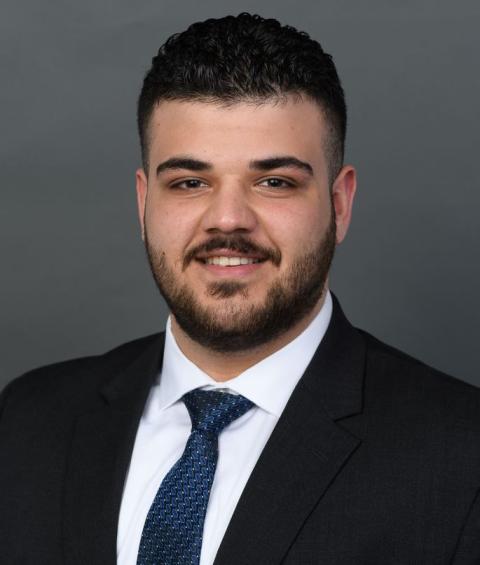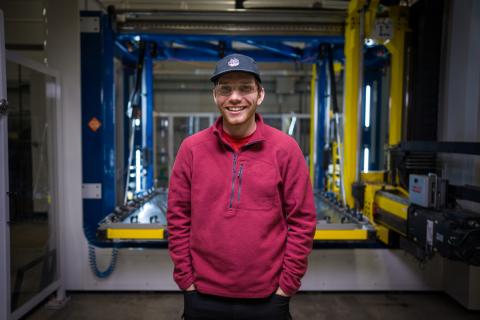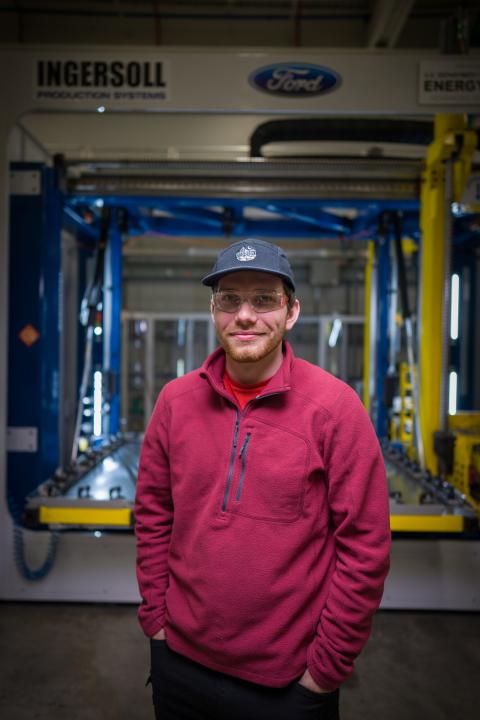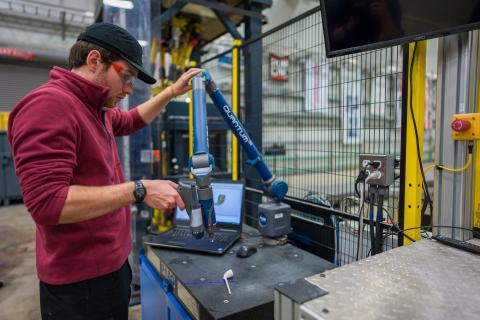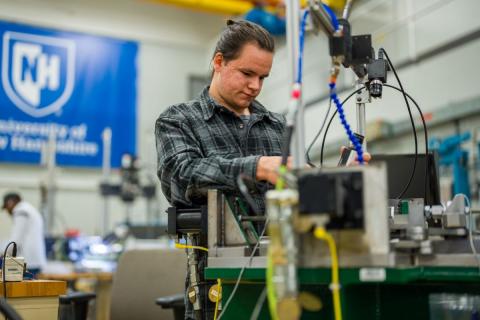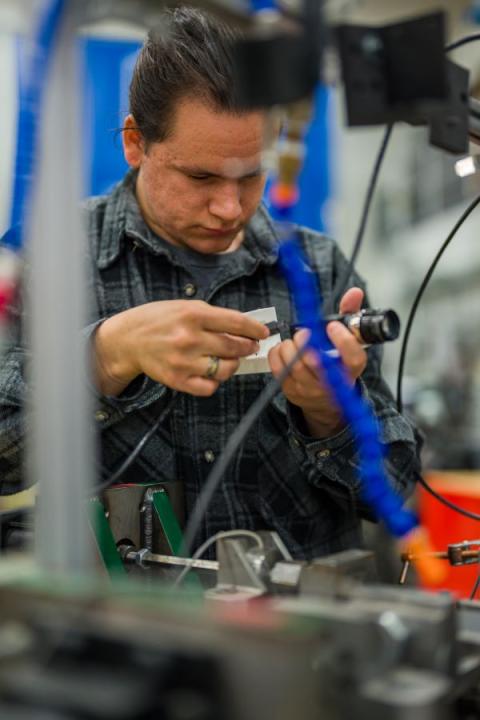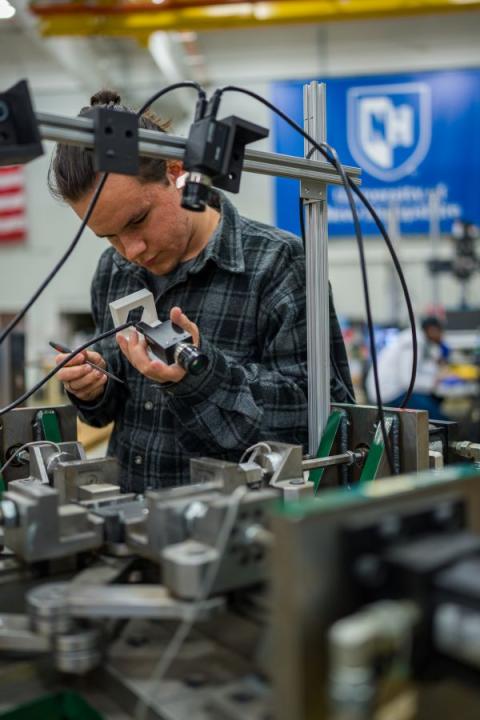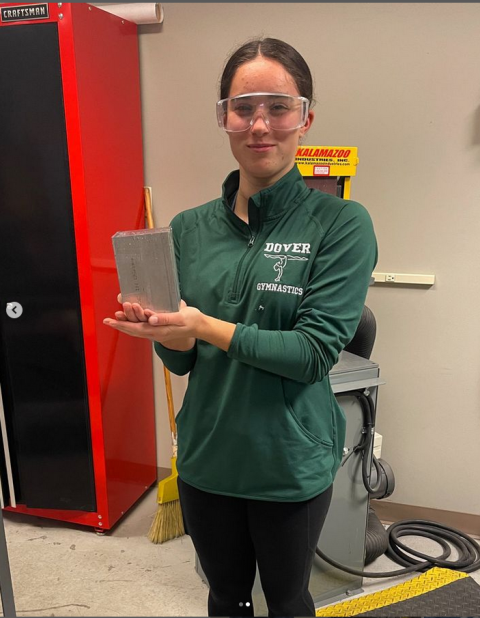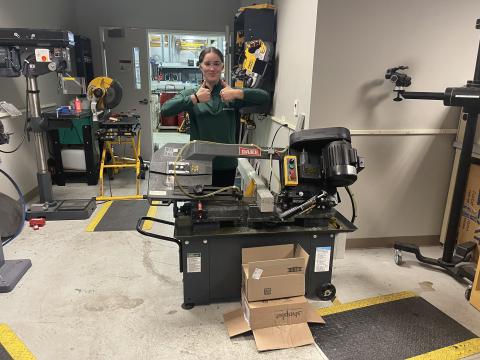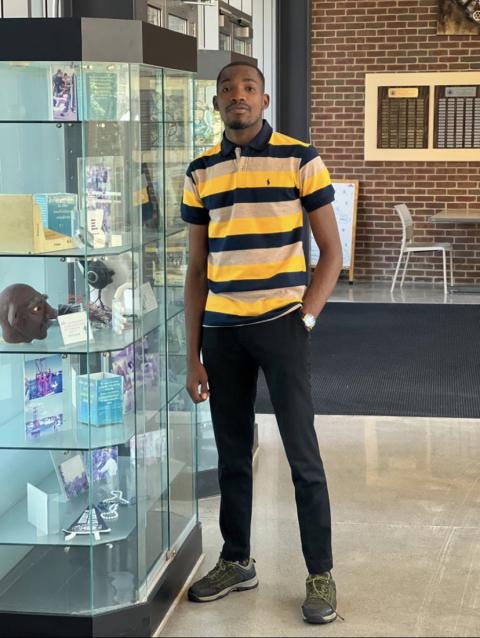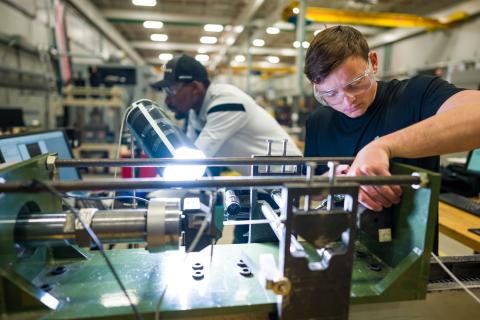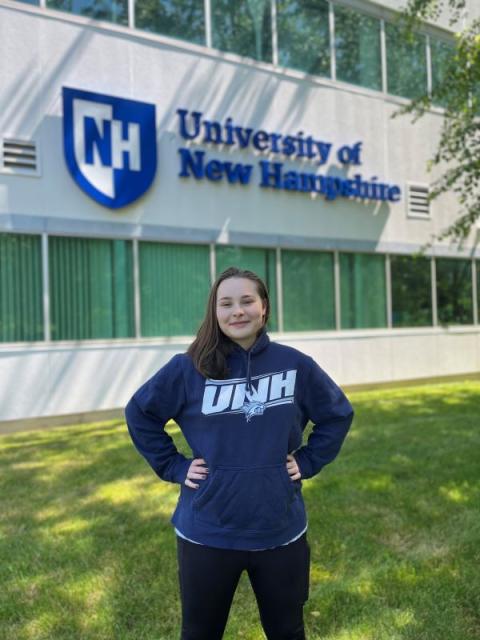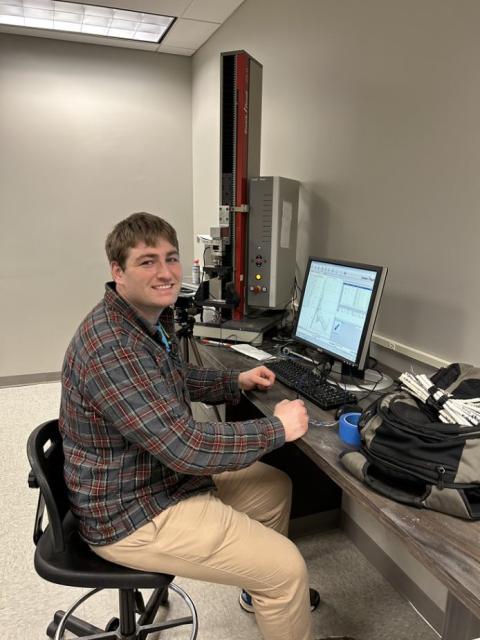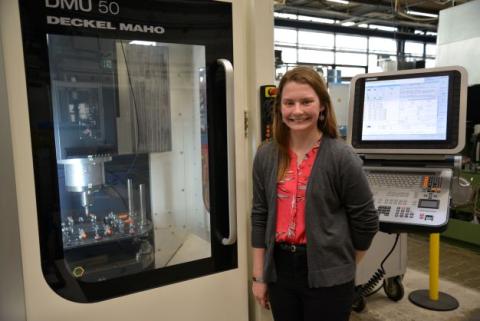Senior Kali Couronis is a communications intern at UNH's Olson Center and has a significant presence behind its website and social media platforms. Kali has led a wide range of projects, from creating social media content to editing videos and pictures to, most recently, updating the Olson Center's website homepage and capabilities tab.
The website was one of two large projects that Kali took on this past summer; the other was making a virtual 360 tour of the center's high bay and lab spaces. For the homepage, Kali took up the technical and creative aspects of the redesign. After completing her Drupal training (the software used to create the Olson Center's website), Kali scrutinized other UNH websites, noting their layout and design. Her process included singling out successful and unsuccessful features.
Kali then styled the center's content in an organized and cohesive design. Her biggest challenge was incorporating elements to make the website ADA-compliant. Some examples of her work include adding ALT text to images, creating enough visual contrast between text and background, and adding video subtitles. Kali is proud of what she has done with the website this summer, both in its functionality and ability to spearhead the project and have freedom in her decision-making process.
Kali found that the Olson Center has allowed her to interact with people in a field contrasting to her own, which she finds to be a very beneficial experience. When discussing her favorite part of interning at the Olson Center, Kali said,
"Everyone at the Olson Center wants you to succeed and receive recognition for all the hard work you do for engineering and communications interns."
Kali has a busy school year ahead. While continuing work on the Olson Center's 360 tours, Kali will also work with Academic Technology at the Diamond Library and join the communication department's Comm-Entary (unh.edu) team in the fall as an editor.
Written by Katelyn Clark '24
